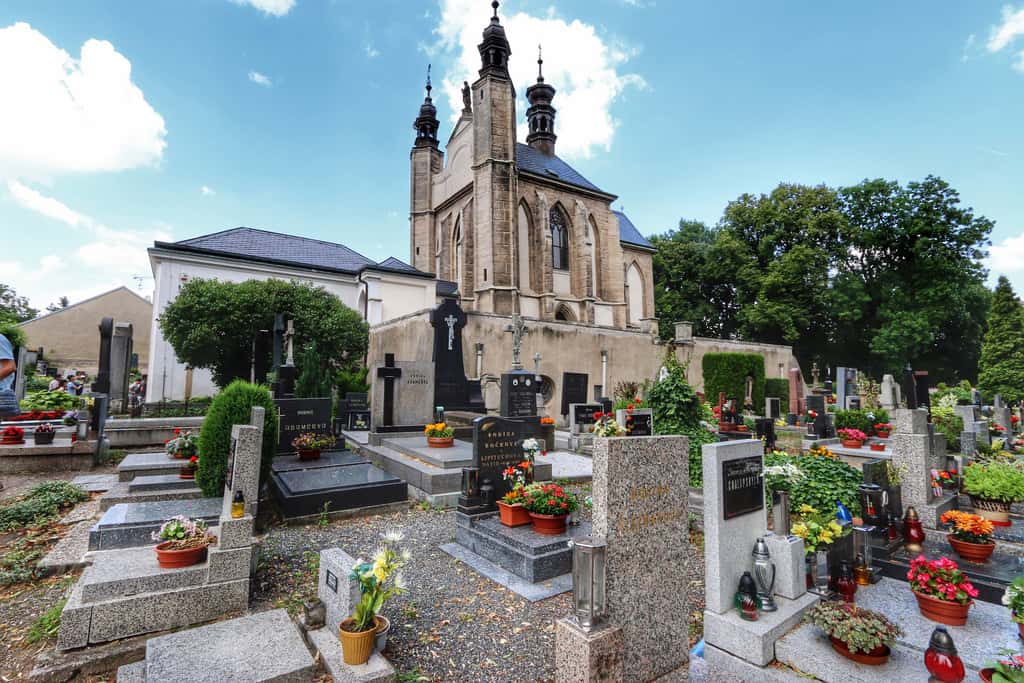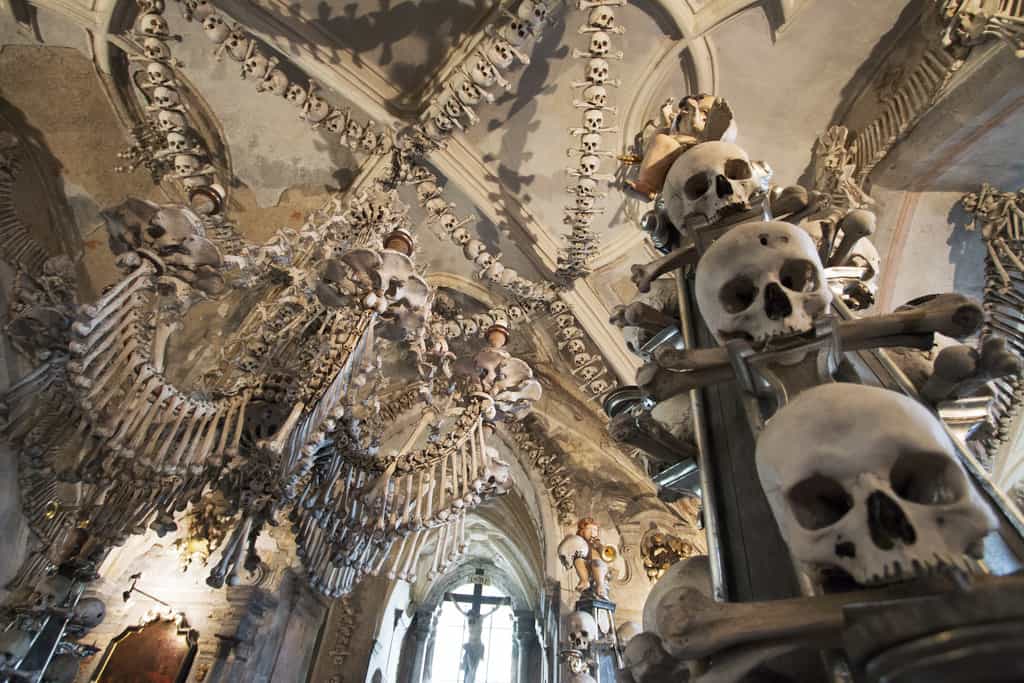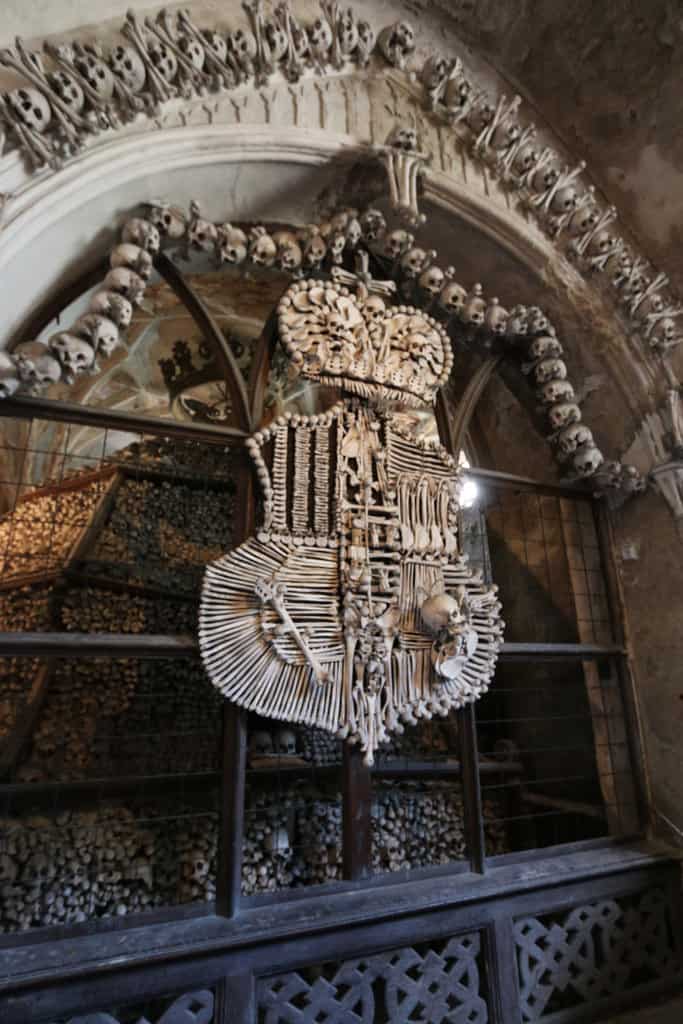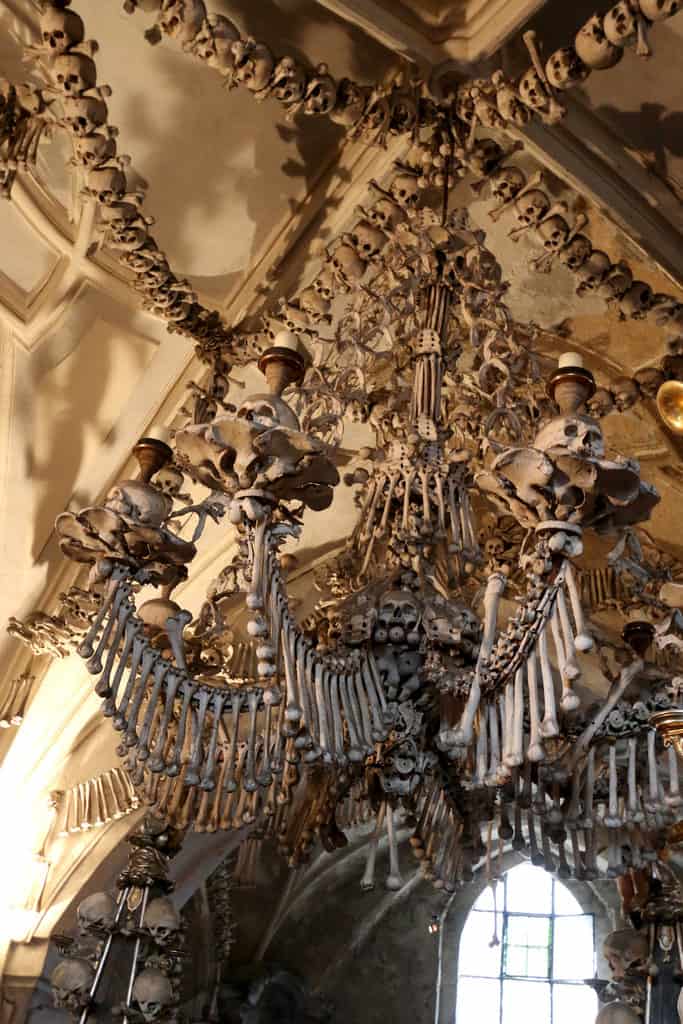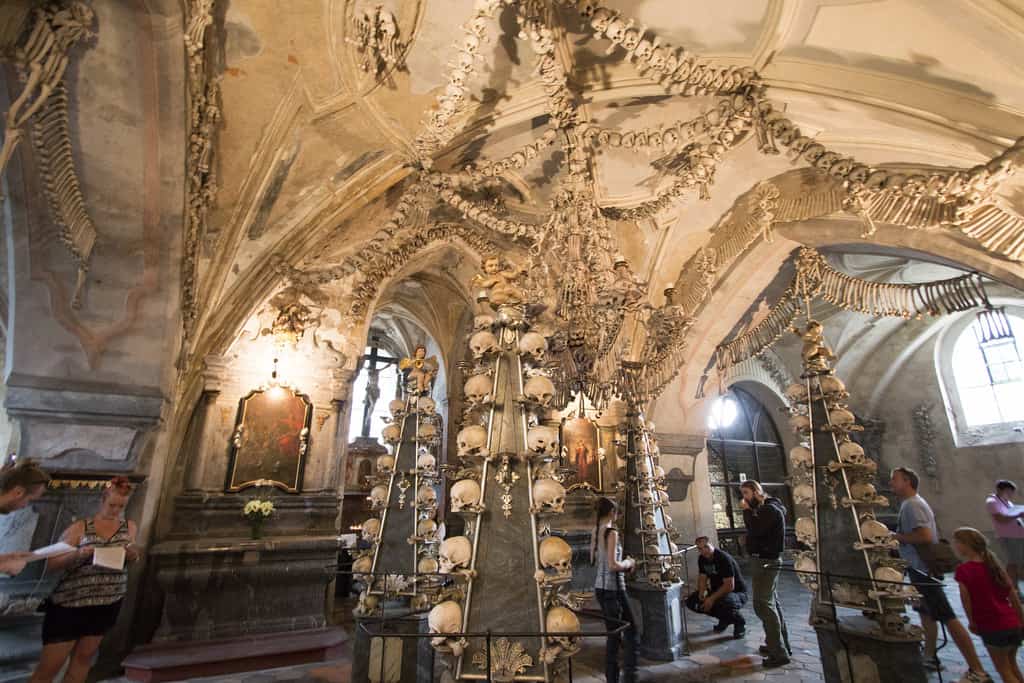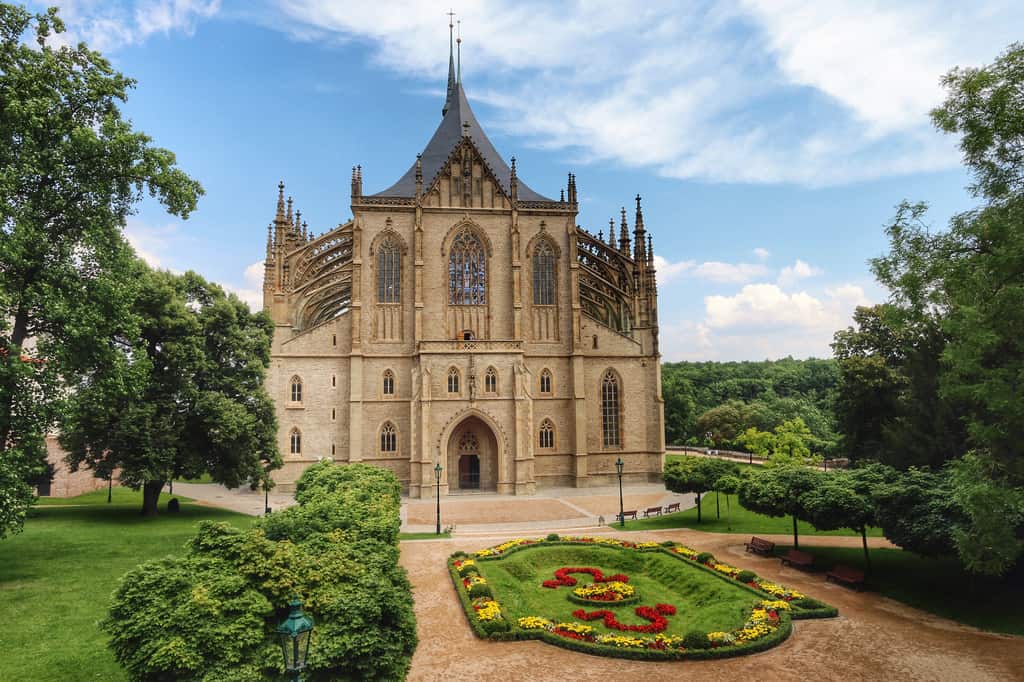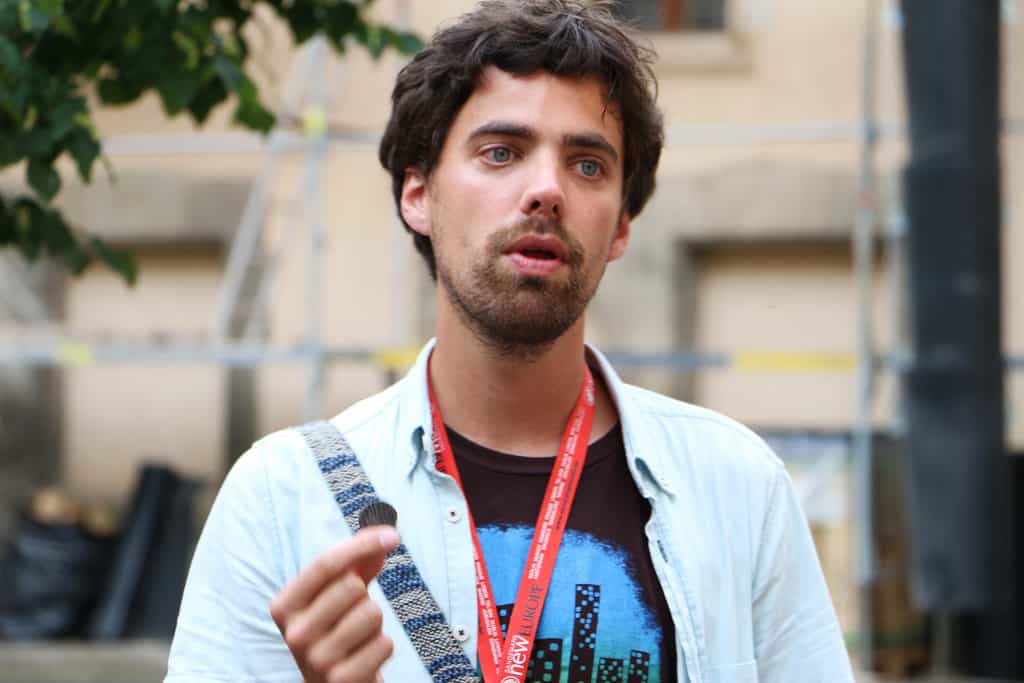Czech Republic
KUTNÁ HORA AND THE EERIE CHURCH OF BONES
With Halloween quickly approaching this weekend, I thought it was the perfect time to talk about my visit to Kutná Hora!
Ever since I had seen photos of the Sedlec Ossuary, I knew it needed to be on my Europe itinerary. This little Gothic-styled church may not seem all that special from the outside, but step inside, and you’ll quickly realize why tourists are starting to make the trek out for a visit.
Located less than an hour from Prague, in the small Czech town of Kutná Hora, the Sedlec Ossuary has a fascinating history.
The church itself was built in the late 14th century, but the cemetery dates all the way back to the early 1100s. Legend has it, that in 1278, the local abbot paid a visit to Jerusalem. It was there that he scooped up soil from the Holy Land of Golgatha and brought it back to scatter amongst the Sedlec’s cemetery. When people heard about the blessed soil, it become one of the most sought-after places for people to be buried in Europe.
The cemetery began to fill up as the Black Plague swept the land, and it continued filling up as the Hussite wars broke out. By the early 1400s, when the Hussites had captured Kutná Hora, almost 20,000 people had been buried in this tiny cemetery.
Slowly, with no space left, the bones began being moved from the cemetery into the ossuary. However, not only were the bones being moved, but they were being carefully arranged in a decorative manor forming big pyramids. While historians aren’t sure who’s the blame for this odd arrangement, another legend states that it was the work of a half-blind monk– one who regained his sight after his work was complete.
In the late 1700s, the Sedlec Ossuary was purchased by the Schwartzenberg family, but that didn’t mean that the bone decorating ceased. In fact, it continued again with the help of Frantisek Rink, who would disinfect each bone before arranging them into giant ornate chandeliers and even the Schwartzenberg coat of arms.
Walking around inside the church, it was interesting to watch the faces and reactions of the other tourists. Many looked horrified and walked out as quickly as they had walked in.
I was surprised that a few people on our tour didn’t even go inside, it seemed like such a waste to travel all that way. Although we did stop by the beautiful-and not morbid- St. Barbara Church before making our way to a delicious Czech lunch.
I was one of the last in our group inside Sedlec Ossuary, taking it all in. Our amazing guide, Tijo explained the history and pointed out some of the causes of death as known by markings on the skulls.
Maybe it’s just me, but I find things like this fascinating. It’s not to be macabre, or maybe it is, but to me, it didn’t feel that way.
So whether you think it’s morbid or intriguing, there’s one thing for sure– a place like this is certainly unique.
Would you visit Sedlec Ossuary? Do you find things like this macabre?
Disclaimer: I visited the Sedlec Ossuary as part of SANDEMAN’s New Europe’s Kutna Hora Tour. I was a guest of the tour, but as always, all love of the macabre and opinions are my own.

